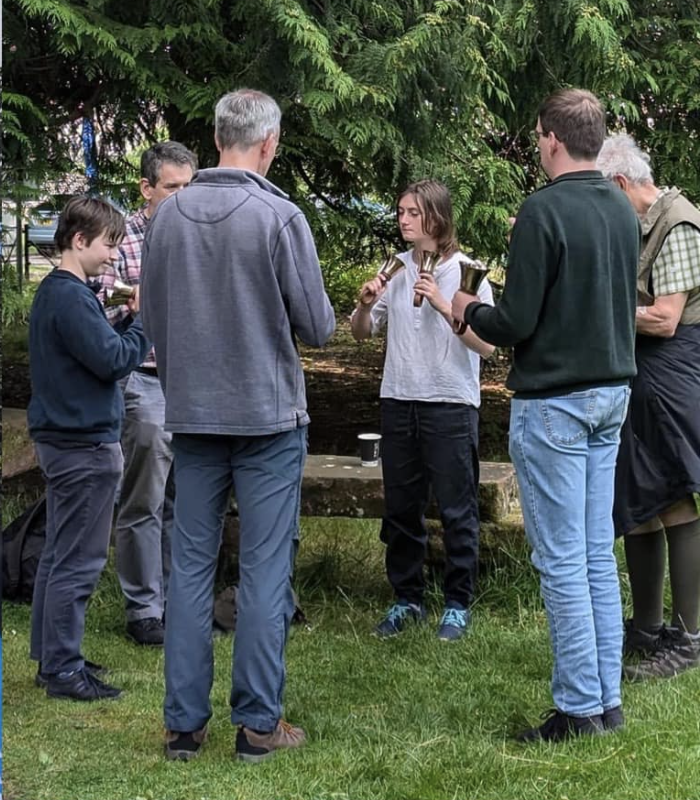
This weekend was the annual Inveraray Ringing Festival (the 50th event, in fact) which is mostly a lot of tower bell ringing. We always try to fit in some handbell ringing too (photo by Ruth Marshall, right). This year in the main session of general handbell ringing, I made everyone try Numbers, which is what I have decided to call the scheme of pattern-based ringing that I wrote about recently. The idea was brought to Glasgow by Chris Field, but after further enquiries we think that Christian Peckham came up with it. We are now trying to spread it further by word of mouth.
The original composition was 4, 5, 6, 7. What does this mean? An even number means plain hunting at the front, up to and including the place mentioned. An odd number means plain hunting at the back, starting from the place mentioned. Bells that are not in the plain hunting dodge in pairs - the handbell pairs are always together. Every block of plain hunting lasts long enough to reverse the bells that are involved in it. The conductor calls it in the same way as spliced. Ringing 4, 5, 6, 7 produces 9012345678 (we have been ringing it on ten, although it works on any number of bells) so the composition is a cyclic five-part. Check my earlier article for a more detailed explanation.
We've rung it in the tower as well as on handbells (it's much easier on handbells, I think) but I decided not to try to get it into the tower-bell sessions at Inveraray. We did ring it a few times on handbells though. An easier warm-up, which we have also rung in the tower in Glasgow, is 6, 10, 4, again as a five-part composition. 10 means plain hunting on all ten, until the bells are reversed as usual. Ringing with just even numbers seems a little easier to get to grips with.
Here's how 6, 10, 4 works:
6 means plain hunting in the front 6 places, with dodging in 7-8 and 9-10, until the front six are reversed:
6543217890
10 means plain hunting on all 10, until the whole change is reversed:
0987123456
4 means plain hunting in the front 4 places, with dodging in 5-6, 7-8 and 9-10, until the front four are reversed:
7890123456
and there's the cyclic part end.
For something similar on eight, try 6, 8, 2. On twelve you could try 8, 12, 4 but it's only a three-part. 10, 12, 2 is a six-part. But part of the fun is coming up with compositions, so try it for yourself.
On Sunday morning we rang two quarters. The first was Yorkshire Major, for which we rang a composition with a before in every course to restrict the work of the tenors. In the past I have called five befores, single home, repeated, but this time I called before home before home three befores, repeated. I quite liked it - there's a lot of coursing for both 3-4 and 5-6, with a few musical coursing orders.
After that we managed a quarter of Cambridge Maximus, which we don't often get an opportunity to try.

